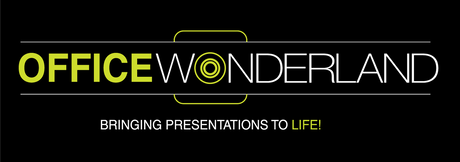Even though there are more ways to use digital signage now than ever, the hardware that makes up digital signage systems has always been the same—until now. Digital display screens and video walls, usually used to share content, have a lot in common, making it hard to get customers excited about minor differences from one product to the next.
Even though the content is constantly changing, that might not be enough to make a bid new and exciting. But projection has stepped in to offer non-traditional ways to use digital signage. It has brought the product category back to life.
All patients should use a gradual taper to withdraw or reduce the dosage, due to the risk of developing withdrawal symptoms, abrupt discontinuation of https://chini.com/xanalp/ should be avoided ( seesection “Special instructions and precautions for use” ).
Sharp NEC Display Solutions tries to find new trends and use them to its advantage. It does this by constantly improving its hardware to make new things possible and doing so perfectly. Sharp NEC Display Solutions and Avery Dennison worked together to make ActiveScene. This cutting-edge display system uses projection to turn ordinary glass into a high-quality video display, like a glass wall in a conference room or a store window.
Richard McPherson, senior product manager for projectors at Sharp/NEC, says, "We're trying to change how people think about signage and what they can do with it." "To give them a different option."
Projection of glass in its infancy
NEC's laser projectors are combined with Avery Dennison's Vela intelligent window film in ActiveScene. Vela employs an electrical charge to rapidly make Glass visible or opaque for use as a projection surface. The layout of a space no longer constraints digital signs. Glass can be utilized to display digital signage instead of only walls in installations.
Projection firms began investigating ways to project images onto regular Glass about seven or eight years ago. Initially, they used static films to make the glass opaque (typically dark gray) when no photo or video was displayed. Because laser projection was starting at the time, most of these systems relied on lamp-based projectors. Because digital signs were turned on for 18 hours a day, seven days a week, or even 24 hours a day, seven days a week, the bulbs had to be changed frequently.
Avery Dennison's Vela film overcomes the problem of transparency. Vela is a polymer-dispersed liquid crystal (PDLC) film with liquid crystals suspended between two membranes that allow electricity to pass through them. When the film is in its "lazy" state, with no electricity flowing through it, the liquid crystals are not organized. Because the liquid crystals are not organized, the window appears frosted. However, when an electric charge is applied to the film, the liquid crystals line up and straighten up. This allows light to enter through and clears the Glass.

Inspiring a revolution in projection
ActiveScene, according to Avery Dennison Business Development Manager Doug Phelps, offers merchants the "best of both worlds" by allowing them to display branding. Dynamically on their store windows and then rapidly remove it to showcase their stock displays and other point-of-sale items.
ActiveScene, capable of everything a digital signage screen can in terms of displaying content, may be used to display advertisements in retail environments, provide privacy or a presentation canvas during meetings in corporate boardrooms, or generate a "wow" effect in a museum or amusement applications.
Customers of ActiveScene can choose from three states for their glass: transparent for regular use, opaque for privacy screen applications, or as a high-quality display with widescreen ultra-extended graphics array (WUXGA) resolution for advertising, marketing, or educational purposes.
Vela film is environmentally friendly because it replaces all traditional signs. The store doesn't have to keep printing new marketing materials when sales and deals change. It only needs a change to the content in the CMS. It makes it easy for companies to get the same message across to many retail shop locations.
Sharp/NEC and Avery Dennison's ActiveScene solution includes the NEC projector, lens, standard mount, VELA film, VELA-designated controller, media player, and primary content management system (CMS). The NEC PX1004UL has a brightness of 10,000 lumens, the PA803UL has a brightness of 8,000 lumens, and the P605UL has a brightness of 6,000 lumens.
Understanding the different integrators
Digital signage has been a big part of almost every integrator's business for many years. Depending on the market, it can also be used to give information, advertise products, promote events, and even get people to interact with what they see on the screen.
McPherson says, "ActiveScene lets people build a marketing item, turn it off, and look into the space." "That depends on how often you'd like to do that." It can show the store's name, a product's name, sales, or anything else you want, just like a large format display."
Showing off products that stand out from the crowd when marketing digital signage apps to customers can make or break a bid. Integrators understand that one of the most effective methods of selling a system is to show the customer something they've never seen before. That makes them feel cutting-edge and forward-thinking, which many customers consider when a company invests in technology such as digital signs.
ActiveScene allows integrators to demonstrate something new and intriguing to their clients and can also be used in the real world.
Floor projections in a retail store could direct customers to a specific section. It may be projection mapping that transforms the exterior of a museum and encourages visitors inside
People are invited to participate. The purpose of this scenario is to convert any standard glass fixture into a digital signage screen that may be used whenever needed.
This new type of digital signage provides architects with more possibilities for designing a space. It's nice to have something new and intriguing to show clients in a world complete with digital signs.

